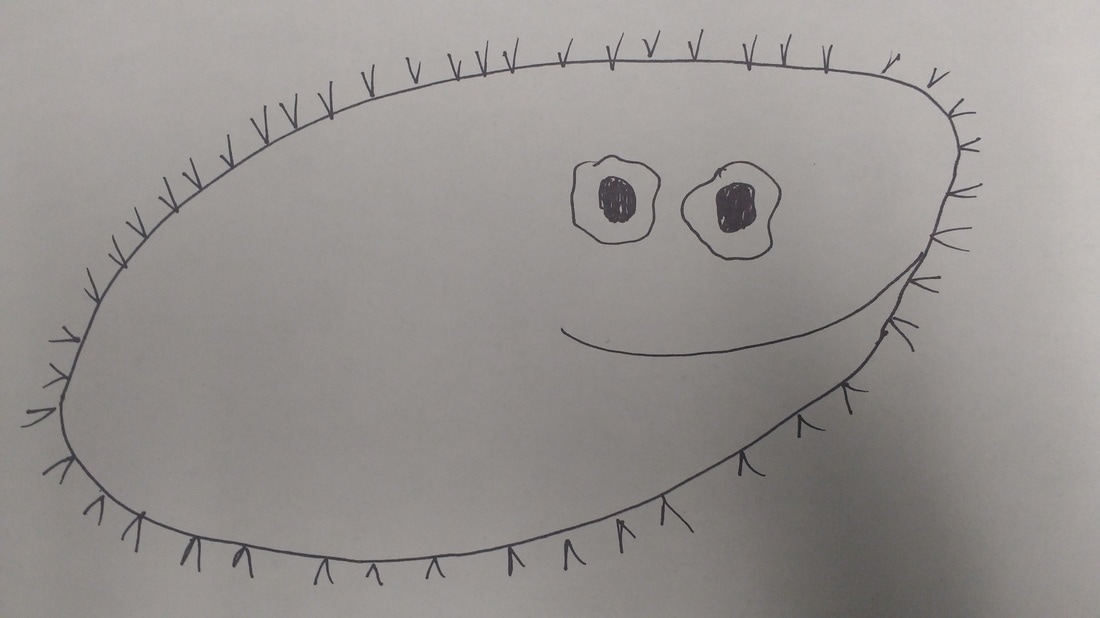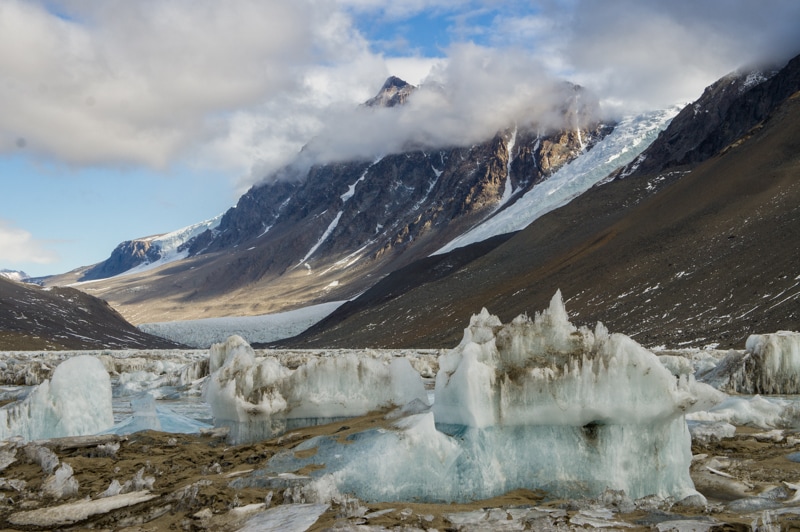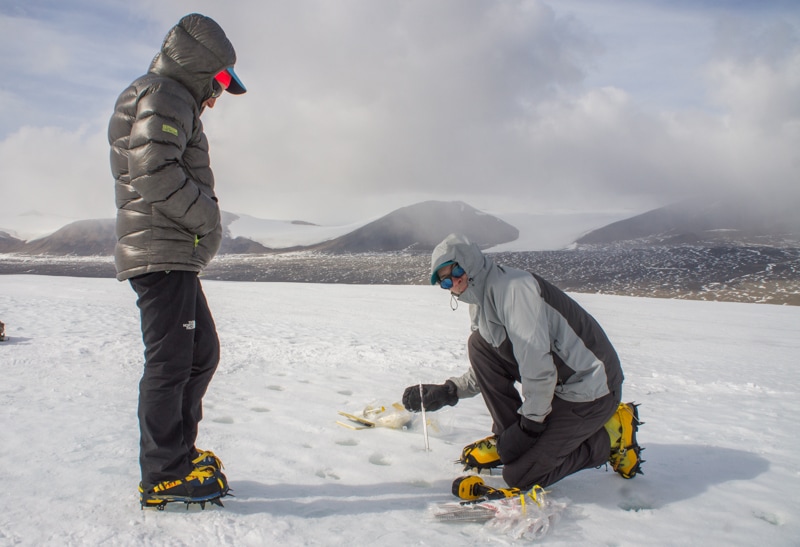|
Paramecium putrinum By Pacifica Sommers This month’s microbe, Paramecium putrinum, is a ciliate. Ciliates are single celled animals, but can be large by microbial standards: many of them that I have observed are more than 100 µm long. That may sound small, but it is 50 times larger than most bacteria, which are usually less than 5 um (Kubitschek et al. 1993), and 5-10 times larger than most human cells, which are 10-20 µm (Barrandon et al. 1985). Ciliates are more like a human cell than a bacterium because their DNA is encased inside an envelope-like membrane in a nucleus (actually in many nuclei, Lee et al. 2000) inside the cell, which bacteria do not have. Ciliates generally eat other organisms, including algae, bacteria, and even other ciliates (Lee et al. 2000). They get the name “ciliate” from the hair-like cilia, structures that beat like tiny oars to propel the cell gracefully through water – even the small amounts of water between grains of soil! Ciliates live in all kinds of environments, from inside humans (yuck), to soils, to ephemeral rock pools on top of volcanoes, and even on glaciers (personal observation!). An example of a ciliate (fig. 1) you may have seen in biology class is Paramecium multinucleatum. Why, you might wonder, is a lab focused on uncultured wild microbes in alpine soils writing about a Paramecium? Well, Paramecium putrinum, a cousin of sorts of the common “lab rat” P. multinucleatum, turned up in Antarctic cryoconite holes! Cryoconite holes are mud puddles that melt into glaciers. You can learn more about our research in Antarctic cryoconite holes at cryoholes.wordpress.com. Mieczan and colleagues (2013) found P. putrinum in 30-40% of the cryoconite holes on a coastal Antarctic glacier, both in the sediment at the bottom of the hole and at the top. Having watched many a “lab rat” Paramecium cruising around a petri dish, their wide distribution inside the cryoconite holes does not surprise me. Having tried freezing and resuscitating my cultures of Paramecium multinucleatum, however, the ability of this species to live in Antarctica is surprising! Cryoconite holes there definitely freeze solid during the long, dark winter, so P. putrinum must have freeze-tolerant abilities that its lab rat cousin lacks. We find a few DNA sequences that map most closely to Paramecium in cryoconite holes in a dry valley of Antarctica (fig. 2-3), on the far side of the continent from where Mieczan and colleagues sampled. Although ciliates in general are some of our most abundant DNA there, Paramecium is not the most common – but it might be a similar Paramecium to the one Mieczan found! References
Barrandon, Y. and Green, H., 1985. Cell size as a determinant of the clone-forming ability of human keratinocytes. Proceedings of the National Academy of Sciences, 82(16), pp.5390-5394. Kubitschek, H.E., 1990. Cell volume increase in Escherichia coli after shifts to richer media. Journal of bacteriology, 172(1), pp.94-101. Lee, J.J., Huntner, S.H. and Bovee, E.C., 2000. An illustrated guide to the protozoa, Second Ed. Society of Protozoologists. Mieczan, T., Górniak, D., Świątecki, A., Zdanowski, M. and Tarkowska-Kukuryk, M., 2013. The distribution of ciliates on Ecology Glacier (King George Island, Antarctica): relationships between species assemblages and environmental parameters. Polar Biology, 36(2), pp.249-258.
1 Comment
|
AuthorVarious lab members contribute to the MoM Blog Archives
October 2023
Categories |




 RSS Feed
RSS Feed
